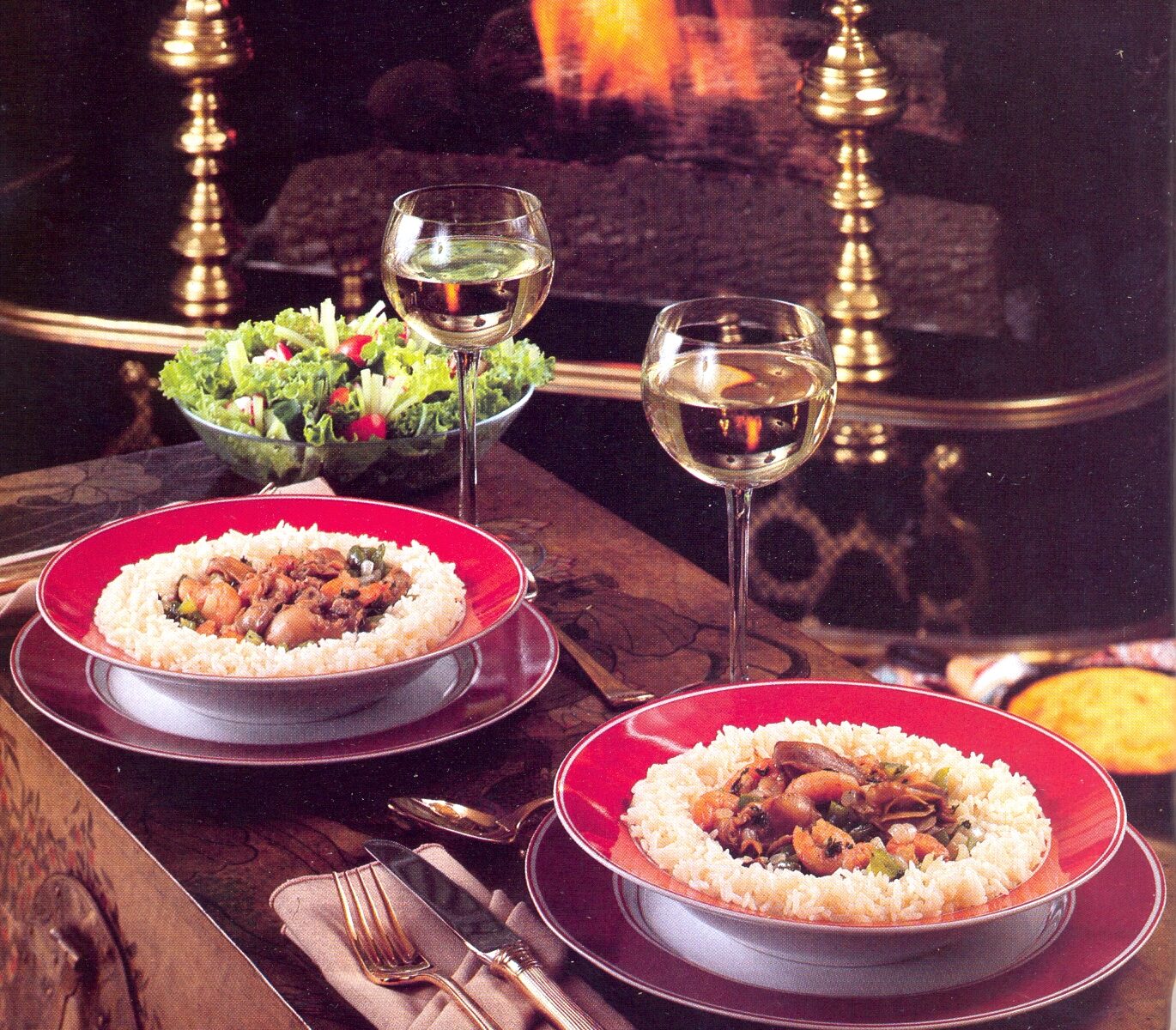I have experimented with many different paella recipes. Eventually, I created my own based on five or six others. In this video, I share my tips and techniques for a great paella. If you want a recipe, send me an email and I will try to put one together, even though I tend to cook rather intuitively. Enjoy!
Quarantine Cocktails – The Piney 75
During quarantine, I have tried to get more creative with cocktail preparation. This is a great recipe for a riff on the French 75. This is a recipe from my friend Joe Liolos (www.instagram.com/iburnedmytoast) for what he calls a “Piney 75.”
Recipe
- 2 oz gin.
- 1/2 oz. lemon
- 1/2 oz. rosemary simple syrup
- Sparkling wine
Shake, double strain into a coupe, top with sparkling wine, expressed lemon swath garnish. The gin I used is Empress 1908 and the wine came from Naked Wines.
Chilled Berry Soup
Here’s my demo of the Chilled Berry Soup recipe from the 15th anniversary edition of “The Moosewood Cookbook.” Enjoy!
Epicuriously Yours,
Tommy
Moosewood Cookbook
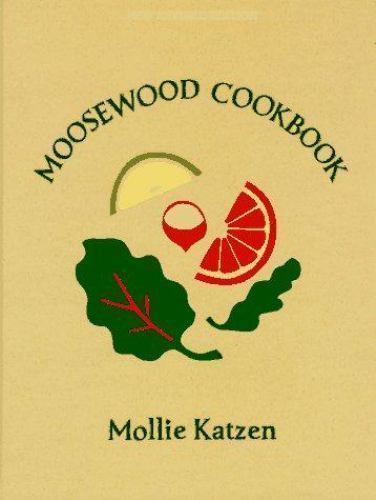
The year was 1973, and a group of friends decided to follow their passions by opening a small restaurant in Ithaca, NY. The called their new venture Moosewood. Initially, they did not set out to create a vegetarian restaurant, but after a short time they found that they had quite simply and easily become just that. Not long after, public demand made one of the founders – Mollie Katzen – consider writing down some of their most popular recipes. History had been made, although she didn’t know it at the time.
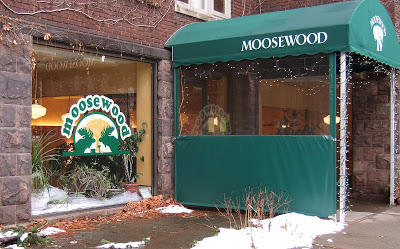
The first edition of the cookbook was self-published in 1974 with the title “The Moosewood Cookbook, Recipes from Moosewood Restaurant in the Dewitt Mall, Ithaca, New York.” This original edition was spiral bound and contained hand lettering and whimsical drawings by Mollie Katzen. The recipes were drawn from the fledgling restaurant’s favorites. After the initial local success, Katzen began to shop for a larger publisher and was eventually approached by Ten Speed Press in California. The book was given a new cover, but still retained the hand lettering and drawings that made the first edition so delightfully quirky.
This first Moosewood Cookbook went on to astounding international success and in 1992 the author published a special 15th anniversary edition – the one that I am reviewing here. This edition took the original recipes and – based on reader feedback – reduced the amount of butter and eggs used in many of them. After 40 years of wild success, the cookbook has undergone yet another iteration. The special 40th anniversary edition was published in 2017 but still with the same cover and the quirky hand lettering and drawings.
Over the years, the Moosewood Cookbook has become an iconic part of many collections, particularly for vegan and vegetarian cooks. In 2007, the James Beard Foundation added the cookbook to its “Cookbook Hall of Fame.” The restaurant recently celebrated their 45th anniversary – a remarkable achievement for any venture in the restaurant world. Mollie Katzen has written a number of other cookbooks and you can get more information on those at Amazon.
This book has been in my collection since the late 1990s. From about 1996 until 1999, I maintained a vegan lifestyle. For a while, I went back to eggs and dairy but by 2001 I was fully back into an omnivorous diet. During the vegan and vegetarian years, however, I collected a fair number of excellent books about those cooking styles so you will likely see quite a few more during this cookbook challenge.
Until I picked this book up last week, I had not cracked it open in probably 15 years. Now I ask myself, “What was wrong with me?” This is one of the best of the best when it comes to simple yet delicious vegetarian and vegan recipes. If nothing else, pick this one up for the chapter on sauces and salad dressings. It will revolutionize even the most meat-centric of kitchens.
Everything here is vegetarian and many are already vegan. One of the great things about the vegetarian recipes is that nearly all of them can easily be modified to remove dairy and eggs, making this a superb option for anyone seeking to learn more about vegan cooking.
If you’re interested in more of Mollie Katzen’s cookbooks, you can find information on Amazon. The Moosewood Collective, too, have published a fair number of additional cookbooks. You can get information about the restaurant and their cookbooks on the Moosewood website, referenced below:
Below is the link to my YouTube review of the Moosewood Cookbook. If you want a hint about which recipe I will be preparing, you can find the ‘random number generation’ moment at about 5:30 into the video.
I will be back soon with the recipe demo.
Epicuriously Yours,
Tommy
Southern Living Cookbook for Two
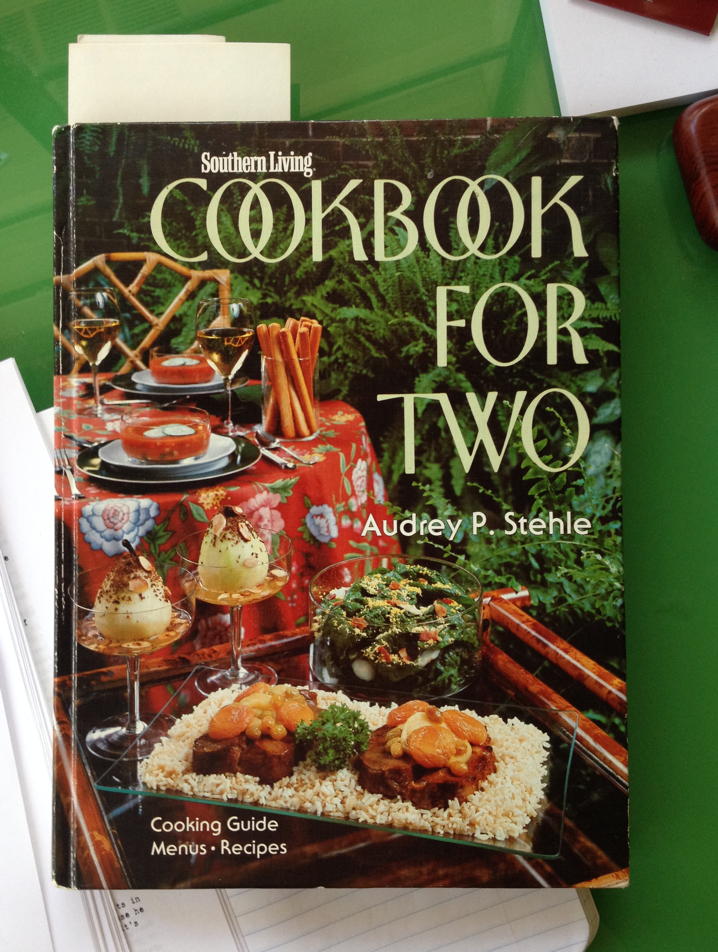
“Cooking for two can be exciting and fun, particularly when you consider its distinct advantages: you can purchase and serve fewer items in larger quantities; you are able to plan interesting meals when satisfying only one or two tastes or palates; you are allowed greater flexibility in the type and amount of food being served; and you use less time and energy when cooking for two.”
“Southern Living Cookbook for Two” by Audrey P. Stehle, p. vi (1981, Oxmoor House, Inc.)
Although it may seem counterintuitive for a blog called “table for one” to review a cookbook called Cookbook for Two, this is the next one on my bookshelf and my cookbook challenge is to review each book, one at a time, in the order they appear on the shelf. And, to be honest, the author’s explanation of the benefits of cooking for two apply equally to cooking for one, which is the majority of my home cooking.
Southern Living Cookbook for Two by Audrey P. Stehle is another of the cookbooks I inherited from my grandmother’s collection. This one was published in 1981, so I don’t think it would be considered vintage. Well, I hope that 1981 isn’t yet vintage, or that makes me an ancient relic. This particular copy was given to my grandmother as a Christmas gift in 1987 and is inscribed, “I hope you enjoy this as much as we enjoy ours. Love, Francis and Betty.”
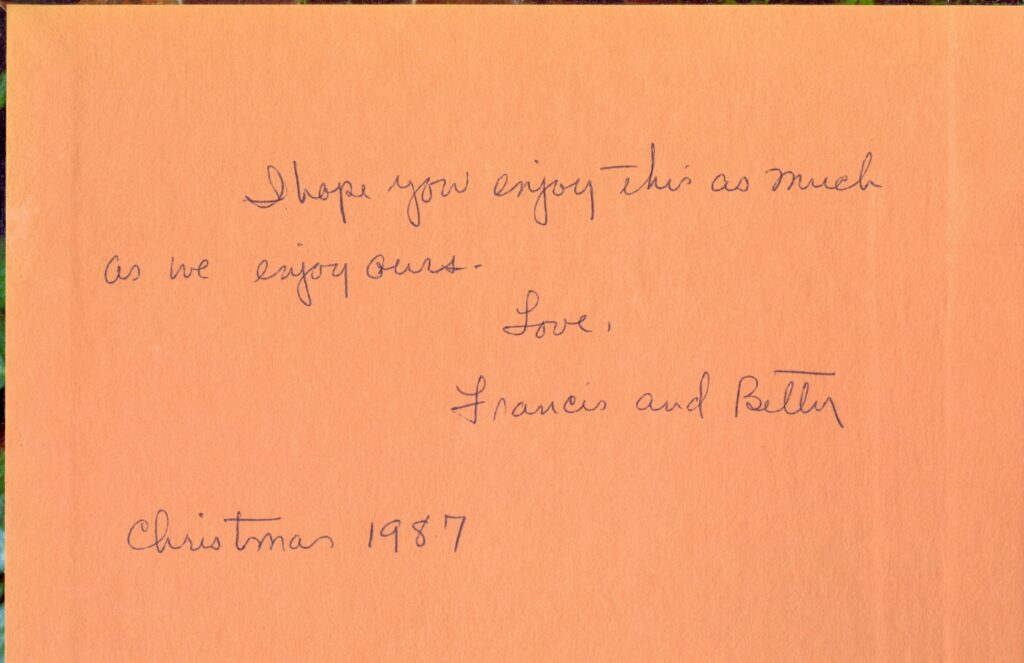
My grandfather died unexpectedly in 1950 and my grandmother never remarried. By the time I came along in the 60s, it was already firmly established that my grandmother and one of her sisters, my Great Aunt Margaret, were living together and they were almost like an old married couple until Aunt Margaret’s death in the late 1990s. A cookbook for two was a natural addition to their collection since most of their meals were meals for two.
This is one of dozens (if not hundreds) of cookbooks published over the decades by Southern Living. According to the Wikipedia entry, “Southern Living is a lifestyle magazine aimed at readers in the Southern United States featuring recipes, house plans, garden plans, and information about Southern culture and travel. It is published by Birmingham, Alabama-based Southern Progress Corporation, a unit of Meredith Corporation. The magazine was started in 1966 by The Progressive Farmer Company, the publisher of Progressive Farmer magazine. In 1980, the company changed its name to Southern Progress Corporation to reflect its increasingly diverse business, and in 1985, it was purchased by Time, Inc. for $498 million.”
One of the major topics in Southern Living is food, and since 1979, the magazine has published a popular Annual Recipes book each year. In addition, they have published specialty cookbooks, including this one by Audrey P. Stehle.
The author provides a couple of excellent chapters with handy tips on cooking for two. The “Creative Cooking for Two” chapter offers suggestions on grocery shopping, food storage, and how to book larger quantities of certain items which can them be repurposed as part of other recipes. In the “Double-Batch Cooking” chapter she discusses how to double recipes and then how to store the leftovers for future meals.
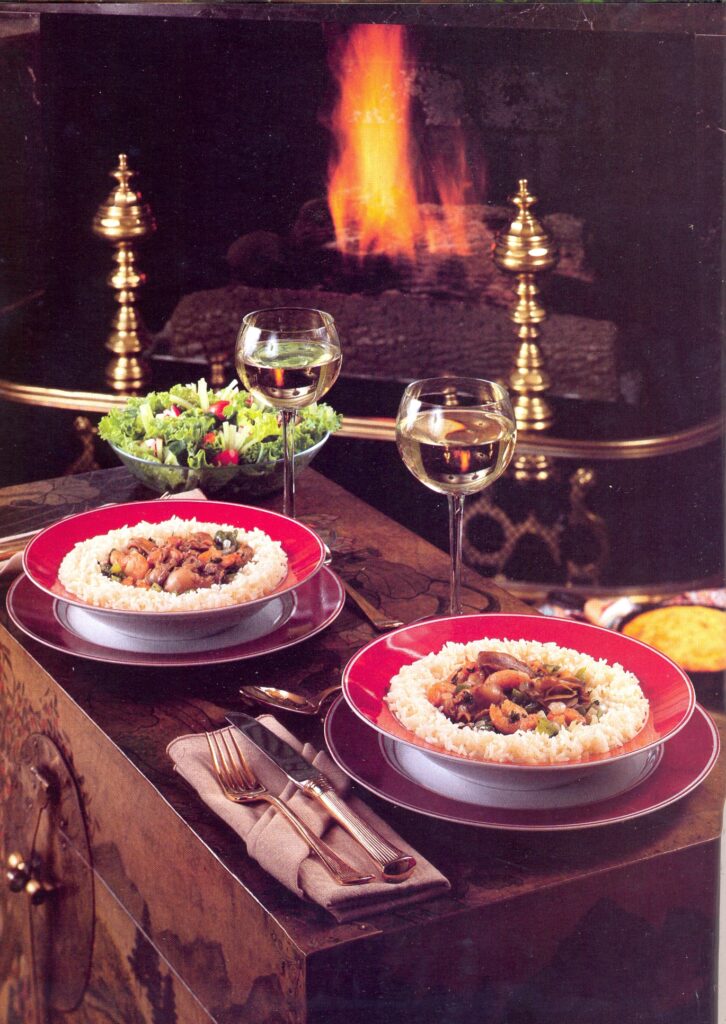
The first third of the book contains a series of 55 menus for full, multi-course meals for two. These are arranged thematically (Breakfast, Brunch, Take-Out Lunch, Special Occasions, Ethnic Cooking, etc.). Each one contains full meals including beverage pairing suggestions (often wine). The wine pairing suggestions are all California-based wines, but the author does suggest what style of wine would be best in case the cook prefers Old World vintages.
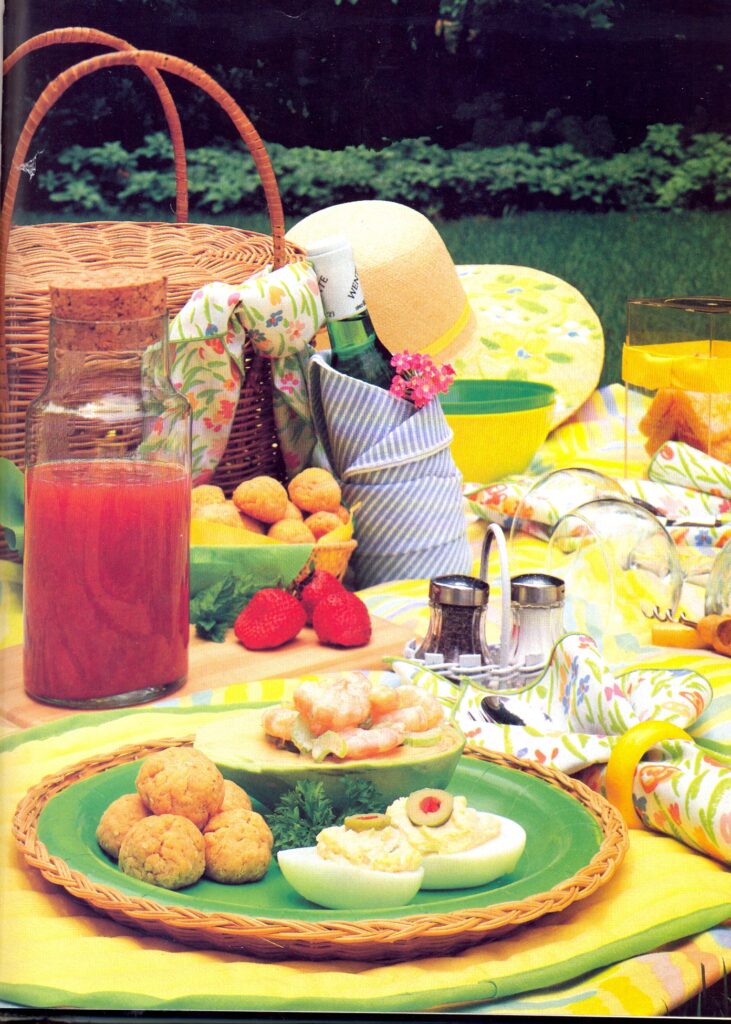
The one odd moment in the first third of the book is a chapter titled “All-Occasion Entertaining.” This section contains full menu suggestions for larger gatherings like New Year’s Day Buffet, Wine Pairing Party, etc. In general, the recipes are designed to feed as many as 20 – 30 guests. What this is doing in a cookbook titled Cookbook for Two is a mystery to me. Still, some of the buffet meal options are intriguing and a few of the recipes could be adapted down for fewer portions.
From page 141 to page 253, we finally get into the sections with individual recipes for two. This portion of the cookbook is divided into more traditional cookbook sections: Appetizers, Desserts, Vegetables/Side Dishes, Poultry, Meat, Seafood, etc. Nearly everything is simple and straightforward in ingredients and preparation.
Overall, I recommend this cookbook for anyone who wants simple, uncomplicated meals for one or two people. None of the recipes make me think, “Wow! That’s spectacular and unusual and I must try it.” Rather, most of them make me think, “Nice. That’s easy and sounds pretty tasty!” For me, this will be a utilitarian cookbook that I can come back to for inspiration when I need something different to get me out of the occasional cooking rut that I tend to fall into from time to time.
For the more visual of you, here’s a link to my YouTube video review of Southern Living Cookbook for Two. You can find a hint to the randomly-generated page and the recipe I am going to prepare at about 6:30 into the video:
I’ll be back soon with my cooking demo!
Epicuriously Yours,
Tommy
Lentil Soup
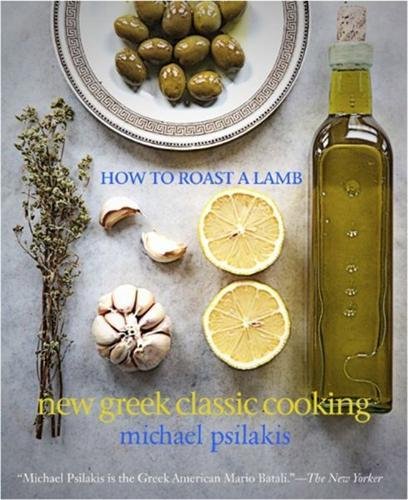 As you may recall from my last post, when I used the random number generator to pick a page in How to Roast a Lamb by Michael Psilakis, I got page 90 and a recipe for Lentil Soup. Overall, this was an easy preparation, not particularly daunting or long. The results were superb (if I do say so myself). The video review is at the bottom of this post, but first I wanted to say a bit about the wine pairing dilemma I faced with this recipe.
As you may recall from my last post, when I used the random number generator to pick a page in How to Roast a Lamb by Michael Psilakis, I got page 90 and a recipe for Lentil Soup. Overall, this was an easy preparation, not particularly daunting or long. The results were superb (if I do say so myself). The video review is at the bottom of this post, but first I wanted to say a bit about the wine pairing dilemma I faced with this recipe.
As I began to consider possible wine pairings with the Lentil Soup, I was stumped. The velvety mouthfeel and savory/umami of the soup, combined with the smoke from the ham hocks and bacon, were a puzzling combination for me to pair. Luckily, I have friends who are wine experts so I contacted by good friend Cindy Rynning. She has a website called Grape Experiences and has been one of my primary “go to” friends over the years when I need excellent wine pairing suggestions. She also has an impressive list of credentials!
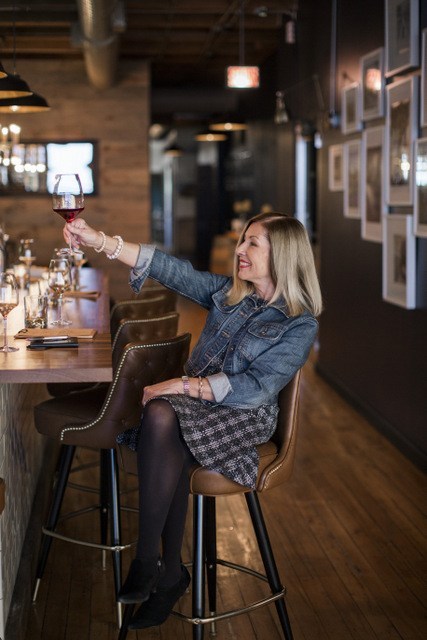 Cindy has completed the Wine and Spirit Education Trust Level 3 class and passed the exam allowing her to hold the WSET Level 3 Advanced Certificate with Merit. She was listed as one of Exel Wines’ Top 100 Most Influential Wine Bloggers of 2015 and received the awards, Best Wine Blog 2016 – United States, Best Wine Blog 2017 – United States, and Best Wine Blog 2018 – United States from Lux Life International Magazine. In both 2017 and 2018, one of her articles was a Finalist in the Millesima Blog Awards in the Wine Travel category. An email in January 2018 informed her that Grape Experiences was awarded Best Wine Blog 2017 by Drizly. Recently, she was ranked #9 in Feedspot’s ‘Best 100 Wine Blogs, Websites and Newsletters to Follow’ in 2019 and in October and November 2018, she was featured on Good Day Chicago on Fox 32.
Cindy has completed the Wine and Spirit Education Trust Level 3 class and passed the exam allowing her to hold the WSET Level 3 Advanced Certificate with Merit. She was listed as one of Exel Wines’ Top 100 Most Influential Wine Bloggers of 2015 and received the awards, Best Wine Blog 2016 – United States, Best Wine Blog 2017 – United States, and Best Wine Blog 2018 – United States from Lux Life International Magazine. In both 2017 and 2018, one of her articles was a Finalist in the Millesima Blog Awards in the Wine Travel category. An email in January 2018 informed her that Grape Experiences was awarded Best Wine Blog 2017 by Drizly. Recently, she was ranked #9 in Feedspot’s ‘Best 100 Wine Blogs, Websites and Newsletters to Follow’ in 2019 and in October and November 2018, she was featured on Good Day Chicago on Fox 32.
(Cindy Rynning (photo above) – Photo Credit: Rebecca Peplinski – Location: Winestyr Chicago Lounge )
For the Lentil Soup recipe, Cindy came up with several stellar wine pairing recommendations. I am listing all of them here, including her notes about each and why she picked them for this particular pairing:
- 2009 Christian Moreau Père et Fils Chablis – Intense minerally, flinty nose. Crisp, racy acidity and ample bright green fruit flavors. Wonderful focus, definition and flavor concentration. Excellent mid-palate weight and breadth. Very long minerally finish. You just want to make sure there’s a bit of oak in the Chablis – you don’t want it too crisp!
- Marco Felluga Pinot Grigio (from Collio in Italy) – Broad, rich, flavorful with bright acidity, minerality and citrus notes. I was in Collio at the end of May and Marco Felluga is a top producer – find this wine and give it a try!! My husband and I just had a bottle at dinner in Chicago on Saturday night-amazing!
- St. Urbans Hof Nik Weis Riesling from Old Vines (slightly sweet) – Intensearomas of petrol, white flesh of ripe peaches, granite, damp stone, pears, lime zest, banana pudding with vanilla wafers, and orange peel. Bright acidity and snappy minerality frame pure and fresh flavors of ripe golden apples, sweet and succulent pears and dried apricots.
- By Dr. Thanisch in Germany: Bernkasteler Badstube Riesling Kabinett 2016 reflects the goal of the winemaker: to “build a trilogy of fruit, minerality, and acidity”. Elegant and balanced with notes of tropical fruit, berries, and hint of salt, this is a wine everyone will appreciate. Just as flavorful, the Bernkasteler Badstube Riesling Kabinett 2017 offers bright fruit notes, incredible balance, minerality, and that velvet-like mouthfeel I’ve come to covet in a wine.
- Lambrusco (it will love the bacon and smoked ham hock!) Ca’ de’ Medici Lambrusco Rosso or whatever else you find! There are plenty – you’re looking for vibrant acidity, red fruit, refreshing, light.
- A quality Pinot Noir from Russian River Valley in California or a New Zealand Pinot Noir such as Mt. Beautiful Pinot Noir 2015. Generous aromas of luscious red fruit, blueberries, blackberries, violets, and vanilla were a dazzling entry. On the palate, I discovered elegant and sophisticated notes of zesty spice, red and black fruit, and a touch of earth, all framed with bright acidity and gentle tannic structure. The lingering finish was incredibly satisfying. Aged for ten months in French oak barrels, the Mt. Beautiful Pinot Noir 2015 is from a vintage year that, by all accounts, was sterling in New Zealand.
In the end, I opted for the most unusual (to me) of all the pairing suggestions – the Ca’ de’ Medici Lambrusco Rosso. Believe me, this is not that horrific stuff that people were quaffing in the 1970s. I won’t mention any brand names here (to avoid a lawsuit) but if you think of the phrase “On ice, so nice” you will know what sort of beverage I am talking about. In reality, Lambrusco has a long and solid history in Italy and if you are lucky enough to sample it there, you will find it to be one of the most versatile and fascinating of the frizzante wines produced in Italy.
Since so many people have old prejudices about Lambrusco, however, I decided to give it a try here in the hope that (1) it would be a great pairing and (2) people might get over their prejudice and go buy a bottle or two to try.
The results were just what I had hoped. The slight sparkle of the wine was a surprising and welcome sensation when put up against the smooth, umami mouthfeel of the soup. The bright fruit and slight sweetness of the wine helped to balance and round out the intense savory, salty, and umami elements of the soup – and Cindy was correct in her assessment of the beautiful interplay between smoky bacon/ham and the wine.
Clearly, Cindy knows her wine! Be sure to check out her website: Grape Experiences.
Here’s the full YouTube video presentation of me cooking (and eating) the Lentil Soup.
Stay tuned for a new cookbook review soon!
Epicuriously Yours,
Tommy
How to Roast a Lamb
The next installment of my cookbook challenge is not a vintage cookbook. This time, I focus on How to Roast a Lamb: New Greek Classic Cooking by Michael Psilakis, published in 2009.
“Life, love, and learning; food, family, and friends. These are the things that I hope to share, from my table to yours. Like the ingredients of each of the recipes in this book, to me, they are intertwined – one cannot exist without the others.”
Those words from page 13 of How to Roast a Lamb: New Greek Classic Cooking provide the essence of Michael Psilakis’ philosophy of food and the core of his cookbook. But this is far more than just a cookbook. It’s more of a celebration of the author’s Greek heritage and a love letter to his parents who instilled in him a lifelong passion for sharing the joys of food with others.
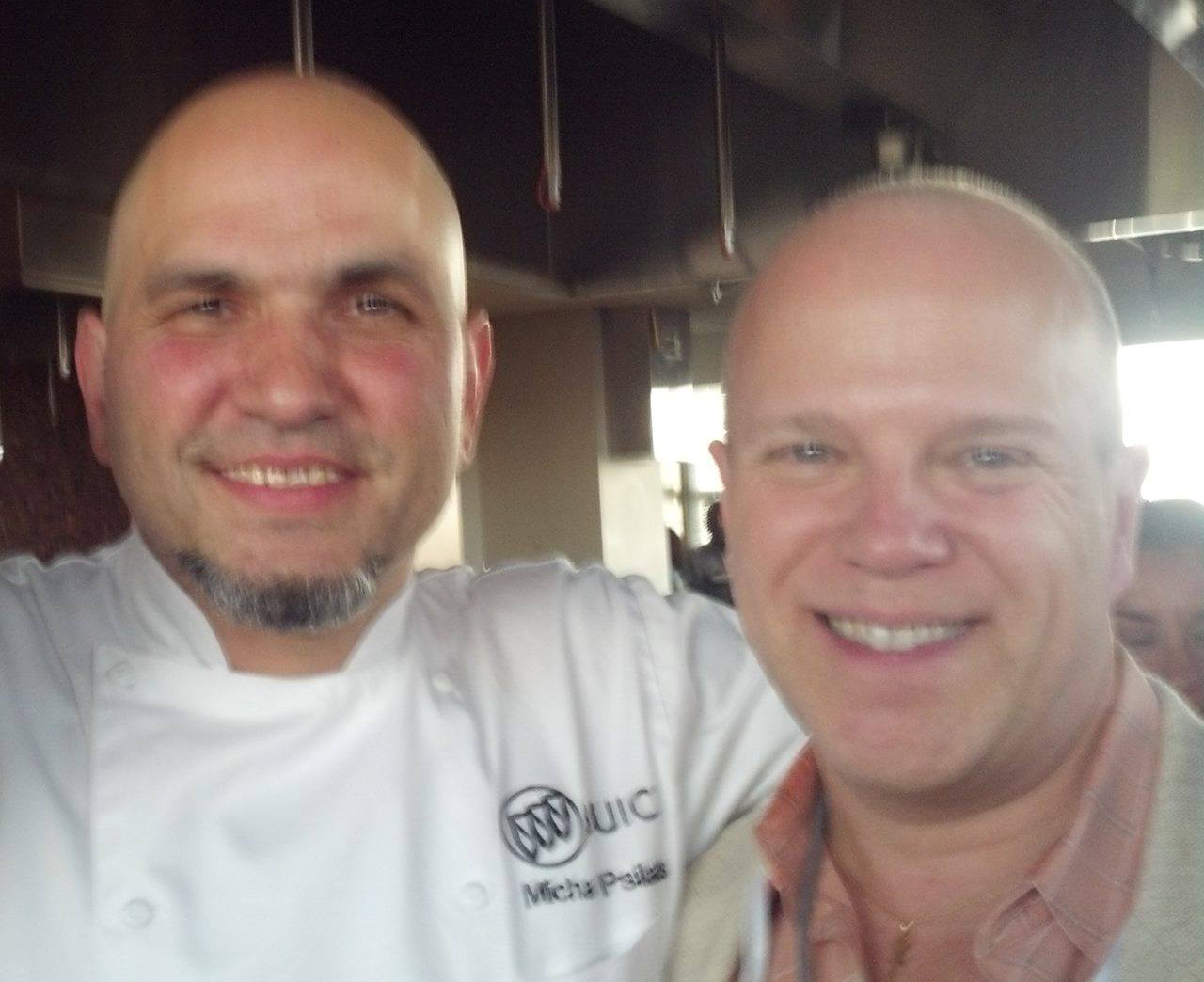 I met Michael Psilakis in the spring of 2010 when I was covering an event at the National Restaurant Association show in Chicago. I attended a cooking demo and as a gift received an autographed copy of How to Roast a Lamb which had been published just a year before in 2009. I remember thinking that it was a lovely, “coffee table” type of book with a gorgeous cover and beautiful photos. I promptly put it on my bookshelf and, quite frankly, forgot all about it until it popped up as the third installment of my current cookbook challenge.
I met Michael Psilakis in the spring of 2010 when I was covering an event at the National Restaurant Association show in Chicago. I attended a cooking demo and as a gift received an autographed copy of How to Roast a Lamb which had been published just a year before in 2009. I remember thinking that it was a lovely, “coffee table” type of book with a gorgeous cover and beautiful photos. I promptly put it on my bookshelf and, quite frankly, forgot all about it until it popped up as the third installment of my current cookbook challenge.
In 2009 when he published this cookbook, Psilakis had already achieved some of the culinary world’s highest honors. At that time, he was taking the New York restaurant scene by storm with his lauded restaurant Anthos and with his interpretation of a traditional Greek tavern, Kefi. Over the past decade, he has continued to elevate Greek cooking in the culinary world and now runs a restaurant group including two locations of MP Taverna as well as Kefi.
Little, Brown published How to Roast a Lamb in 2009 and it went on to win a number of awards. They then published his second cookbook Live to Eat: Cooking the Mediterranean Way in 2017. Both cookbooks focus not only on food, but on the stories behind the food.
“Food is our most elemental and basic need. Like the air we breathe, we need it to survive. And yet for me, and so many others, food is also a vehicle for communication.”
That quote on page 224 explains the power of this cookbook – the honest, sincere, and complex stories that stand behind his passion for cooking.
Each chapter opens with a story explaining some aspect of Psilakis’ childhood and how food was the center of his family experience. Each chapter then follows with recipes that connect with the beautiful stories he tells about his life growing up in a tightly-knit, traditional Greek family. The writing is sincere and emotional. I will fully admit to being hyper-emotional, and I teared up more than once reading some of the more intimate stories and feeling the depth of his love and respect for his parents. I found myself frequently thinking back on my own childhood and wishing I could go back and express more clearly to my parents just how much their love and support meant to me. Psilakis had the good fortune to be able to share those things before his father passed in 2007, even if he was not able to share this cookbook.
As for the recipes, they first appeared a bit daunting to me as I paged through the book. Once I started to read more closely, however, I realized that very few of them are beyond my own skill sets. Psilakis explains the processes of preparation clearly and succinctly, often suggesting substitutions and additions that can make dishes more versatile.
The only exceptions to the “relatively simple to prepare” recipes are the chapters Big Party Cooking and Anthos – The New World. The first of those chapters focuses on cooking for huge numbers of people and the recipes are vast and complex. You know you are in trouble when the first recipe starts with the instruction, “Decapitate the lamb.”
The other chapter contains some of his most celebrated dishes from the elevated restaurant Anthos. He warns readers that those recipes are complicated and require great skill and often equipment that is rarely found in a standard home kitchen. Still, he suggests that readers start with other recipes and then try out at least one of the Anthos dishes as a challenge.
 At the end of the book, Psilakis offers a two-page summary that groups recipes by type. Since the book is put together by theme – summer cooking, seafood, game, etc. – each chapter has appetizers, salads, soups, and main courses. This two-page summary helps to group things together so that you can easily find all of the salads or soups or whatever without having to page through the entire book.
At the end of the book, Psilakis offers a two-page summary that groups recipes by type. Since the book is put together by theme – summer cooking, seafood, game, etc. – each chapter has appetizers, salads, soups, and main courses. This two-page summary helps to group things together so that you can easily find all of the salads or soups or whatever without having to page through the entire book.
One of my favorite portions of the book is the final chapter, The Aegean Pantry. Here is where Psilakis offers recipes for many of the sauces, confits, and dressings that are integral to so many recipes throughout the cookbook.
After having this cookbook sit on my shelf for nearly nine years, I regret not having read it earlier! Some of the recipes are my favorites when dining at Greek restaurants, and now I have the recipes to make them at home.
You will find my video review below, including the (in)famous random number generation portion that will reveal just what recipe I will be challenged to prepare!
My next post will be my assessment of my cooking challenge!
Epicuriously Yours,
Tommy
PS You can get a sneak preview of the randomly chosen recipe at 9:50 into the video.
Crab Meat in Timbales
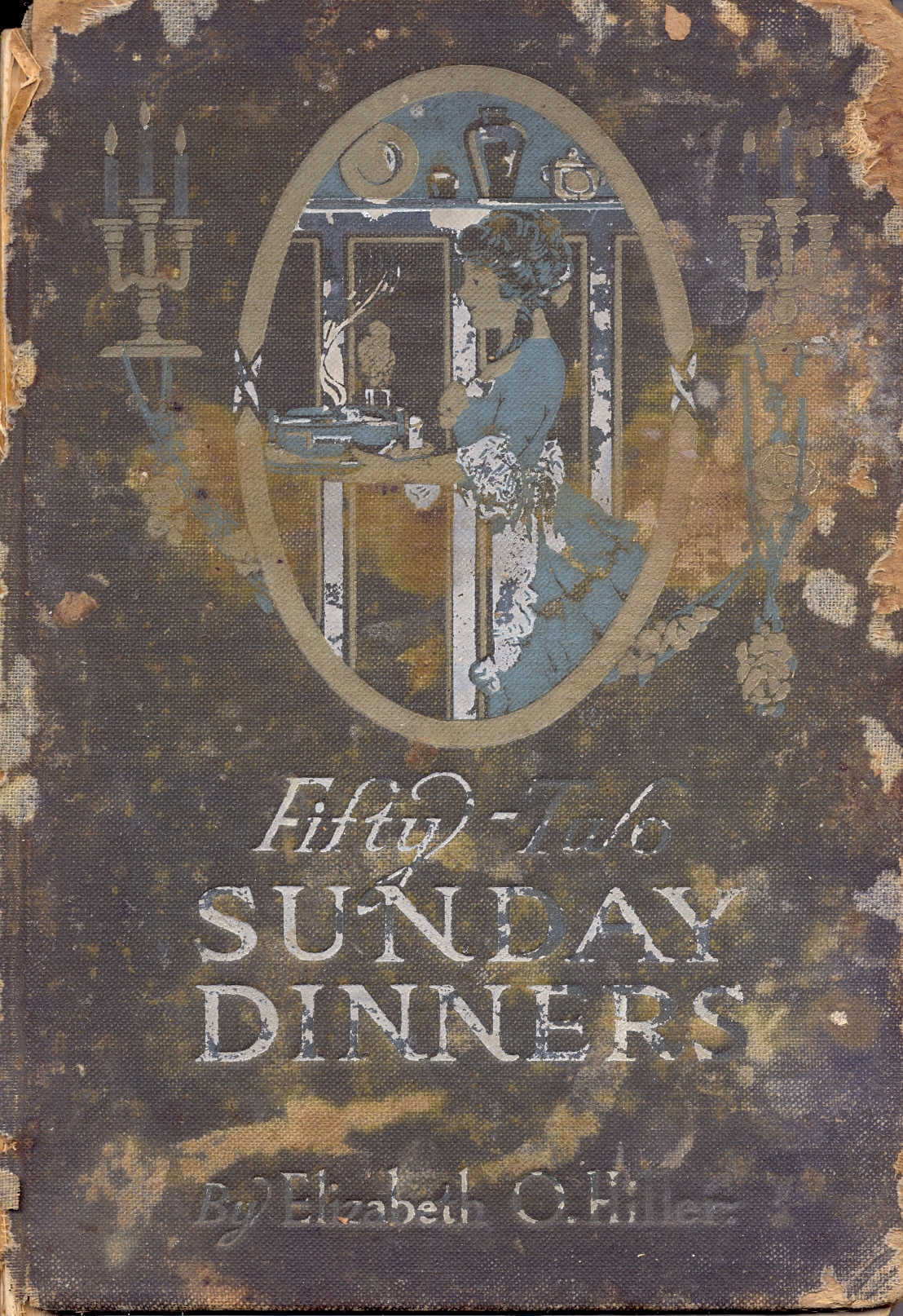 Welcome back to my cookbook challenge.
Welcome back to my cookbook challenge.
As promised in my prior blog post, I am posting the video of my attempt to prepare Crab Meat in Timbales from page 15 of Fifty-Two Sunday Dinners by Elizabeth O. Hiller.
As you will see, I clearly need to practice my “Swedish Timbale” technique.
I paired the recipe with one of my favorite sparkling wines, a 2016 W. Donaldson Sonoma Rosé available from my favorite wine club – Naked Wines. Wayne Donaldson is the former head winemaker for Domaine Chandon, so you can be assured that his sparkling wine is superb.
If you’re interested in picking up a set of the timbale irons I used in this demo, you can find them on Amazon.
Until next time, I am as always . . .
Epicuriously Yours,
Tommy
52 Sunday Dinners
“To the modern wide-awake, twentieth-century woman, efficiency in household matters is quite as much a problem as efficiency in business is to the captains of industry.”
Thus begins the Introduction to Fifty-Two Sunday Dinners.
This is the second installment of my cookbook challenge and the oldest of all the vintage cookbooks I inherited from my grandmother. This book is titled Fifty-Two Sunday Dinners by Elizabeth O. Hiller, published in 1913 by the N.K. Fairbank Company. At that time, the book sold for $1.00. According to the US Inflation Calculator, that equates to just under $26.00 in 2019 funds so clearly this was a cookbook aimed at a somewhat more affluent household of the time.
I am including my YouTube video review of the cookbook at the end of this post.
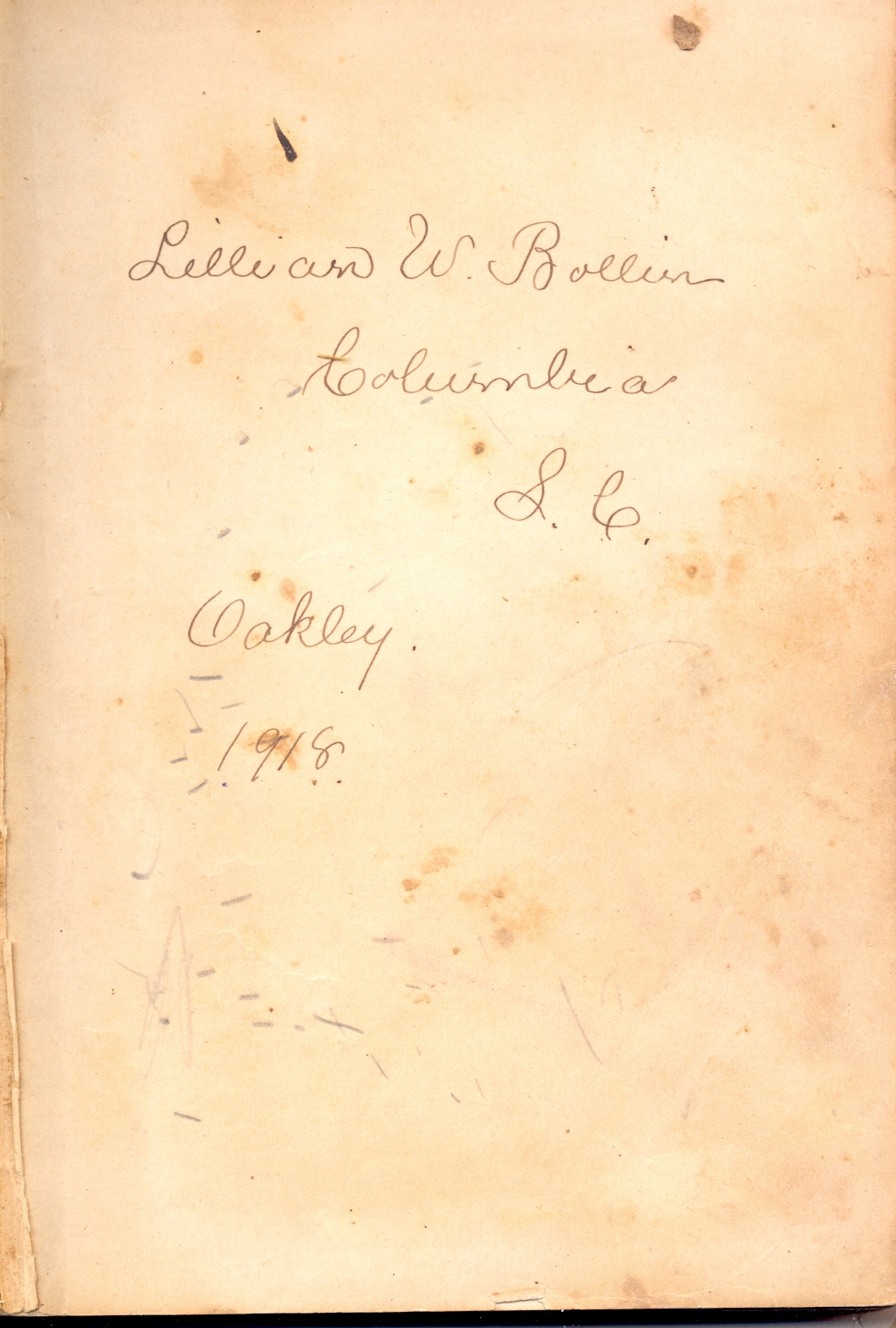 My copy of this cookbook is falling to pieces. Both the front and back covers have detached from the book, and it has clearly seen some use. The book is inscribed by my great grandmother, Lillian W. Bollin and dated 1918. She was born in 1863 in Richmond, VA, so at this point would have been in her mid-fifties and living in Columbia, SC.
My copy of this cookbook is falling to pieces. Both the front and back covers have detached from the book, and it has clearly seen some use. The book is inscribed by my great grandmother, Lillian W. Bollin and dated 1918. She was born in 1863 in Richmond, VA, so at this point would have been in her mid-fifties and living in Columbia, SC.
The author, Elizabeth O. Hiller, was a prolific cookbook author and well-known culinary figure. Among other things, she wrote recipes for the Chicago Tribune and early in her career lost out to Fanny Farmer to be a columnist for Women’s Home Journal. If she has won, I imagine we would know more about her. If you look up her list of publications, however, you will see that she was a busy writer. You can get more information about her at her Wikipedia bio.
Fifty-Two Sunday Dinners is a fascinating cookbook for a number of reasons. First, the recipes are complex and use expensive ingredients – indicating again that the market was a more affluent household. Second, the structure of the cookbook is not just a collection of recipes, rather it is a collection of 52 full meal plans, each geared towards a different Sunday of the year. Finally, it is both a cookbook and what we would call an “advertorial” for a product called Cottolene.
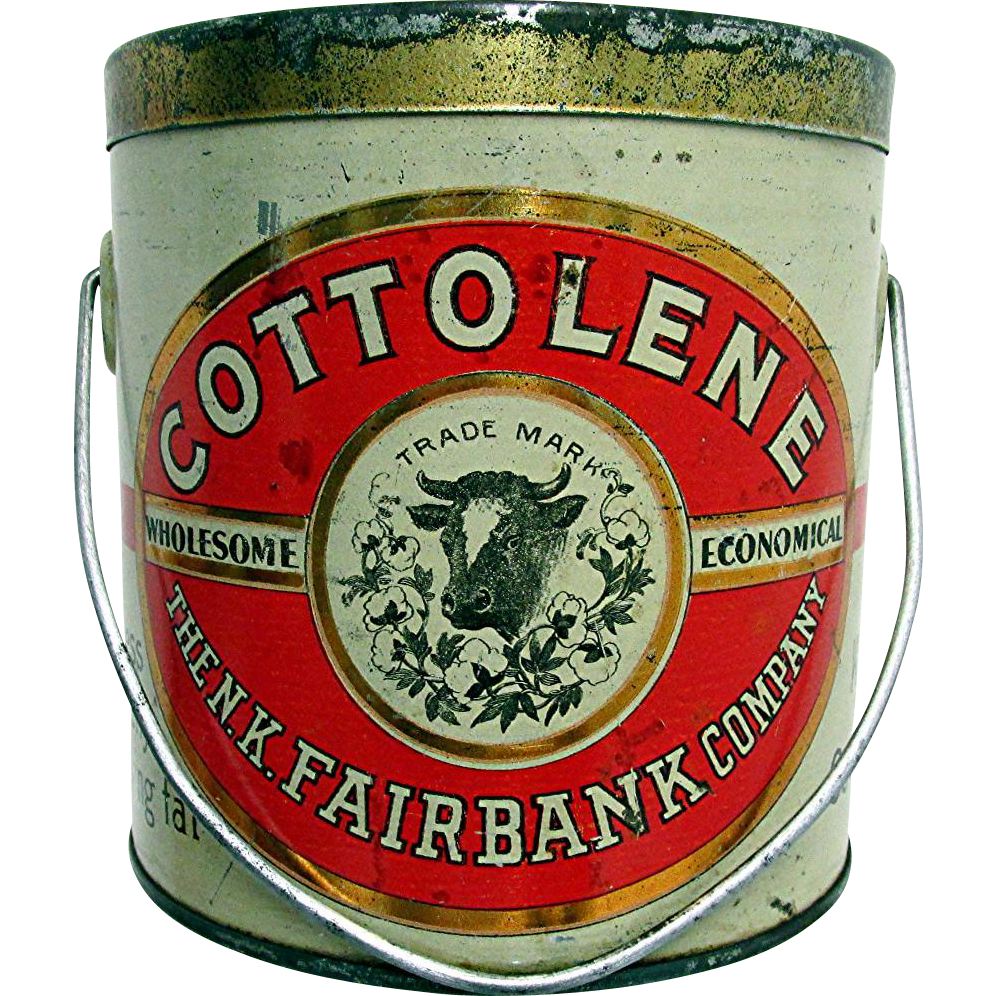 I would love to know how many readers have ever heard of Cottolene. I know that I had no clue what it was until I started to read the cookbook and then did a great deal of online research. In 1868, the N. K. Fairbank company premiered a product made from a combination of cottonseed oil and beef suet. This product, called Cottolene, was touted as a healthy alternative to lard. The product was the end result of what had previously been waste products in two major industries – cotton and meatpacking. From 1868 until 1911, Cottolene was essentially the only product of its type on the market.
I would love to know how many readers have ever heard of Cottolene. I know that I had no clue what it was until I started to read the cookbook and then did a great deal of online research. In 1868, the N. K. Fairbank company premiered a product made from a combination of cottonseed oil and beef suet. This product, called Cottolene, was touted as a healthy alternative to lard. The product was the end result of what had previously been waste products in two major industries – cotton and meatpacking. From 1868 until 1911, Cottolene was essentially the only product of its type on the market.
In 1911, however, a company called Proctor and Gamble created a product called Crisco (I bet you recognize that one). Crisco was 100% cottonseed oil. What ensued then was a competition to see which product would win over the hearts (and stomachs) of American’s housewives.
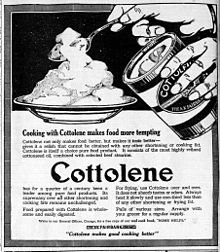 Both companies did traditional advertising, but also utilized the “advertorial” concept similar to the one from Fifty-Two Sunday Dinners. They would find a noted cook and/or recipe writer, have them compile a cookbook, then include information about the product. That information generally included testimonials from well-known cooks as well as testimonials from doctors, touting the health benefits of the product over those of lard and butter.
Both companies did traditional advertising, but also utilized the “advertorial” concept similar to the one from Fifty-Two Sunday Dinners. They would find a noted cook and/or recipe writer, have them compile a cookbook, then include information about the product. That information generally included testimonials from well-known cooks as well as testimonials from doctors, touting the health benefits of the product over those of lard and butter.
Obviously, Crisco won that PR battle because it’s still here while Cottolene has faded into the annals of culinary history.
In an online article, Alice Ross does a great job of exploring the history of both Cottolene and Crisco and what she terms the “mysterious disappearance of lard.” You can also get information about Cottolene and Crisco on their respective Wikipedia pages.
The advertising campaign for Cottolene was fascinating. I invited you to use your favorite search engine to find images of early 20th century Cottolene advertising. I think you will be entertained by what you find. I will include a few images at the end of this post as well.
According to the Introduction of the book:
The eternal feminine question is, “What shall we have for dinner to-day?”
Fifty-Two Sunday Dinners, as you see, is clearly a product of the time. In 1913, the assumption was that women stayed home to take care of the family while husbands went out and worked to support the family. If you can get past some of these types of references in the cookbook, however, you will find an extraordinarily well-crafted series of recipes. The title gives a clue as to the layout of the book. Rather than being a simple collection of recipes, the book is divided into 52 sections each containing a full menu designed for a specific Sunday of the year. The assumption is that Sunday dinners are generally more elaborate than the rest of the week.
For instance, as I am writing this review the next Sunday will be the 1st Sunday of August. In the cookbook, that menu consists of the following:
- Nova Scotia Canapés
- Pan Broiled Fillets of Beef – Sultana Sauce
- Carlsbad Potatoes
- Peas and Onions French Style
- Lettuce, Peppergrass and Onion Salad
- Peach Ice Cream
- Cocoanut Cake
- Coffee
A very complete meal – and that’s one of the least complicated of the meals in the book.
The author aligns ingredients and recipes to be as seasonal as possible. In the Introduction, the publishers note:
While climatic conditions differ somewhat in various sections of the country, we have tried to approximate the general average, so that the suggestions might be as valuable to the housewife in New England as to the housewife in the West or South, or vice versa.
From the ingredient lists, it seems clear that refrigerated transport was available up to a point. Many winter recipes include oysters, which would obviously have to be shipped quickly and on ice to get to the Midwest safely. Beyond that, most of the ingredients seem to be focused on what can be found locally and seasonally. During spring and summer months, many menus include dandelion greens along with instructions how to harvest and clean them.
Overall, I found this cookbook to be one of the best I have read in a quite a long while. There are very few recipes repeated, so in the course of reading this cookbook you will find over 300 intriguing options. I also love the ‘meal planning’ aspect of this book. The idea of putting together full meal plans makes it easy to just lift a section and create a fantastic meal for six hungry people at any time. The meals are not simple to prepare, nor are they for the novice cook. Some of the techniques are time-consuming and intricate, but the results are sure to be superb.
If you’re interested in this cookbook, you don’t have to search for an actual vintage copy. I found out that the book was republished in its entirety in 1981 with the same cover art and all of the vintage Cottolene information intact! So check out Amazon for a more recent copy.
As promised in my introduction to the cookbook challenge, I used a random number generator to pick a page from the cookbook. The page chosen was page 15, containing the following recipes:
- Consommé Duchess
- Imperial Sticks
- Crab Meat in Timbale Cases
- Swedish Timbales
My next post will be a video of my cooking one (or more) of the recipes from that page. Until then, please enjoy the video review below.
Epicuriously Yours,
Tommy
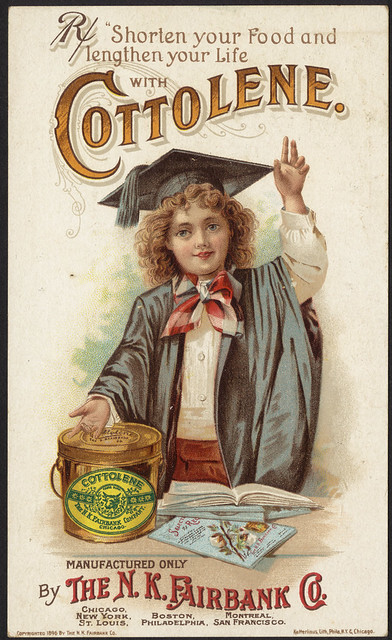
Tuna Noodle Casserole
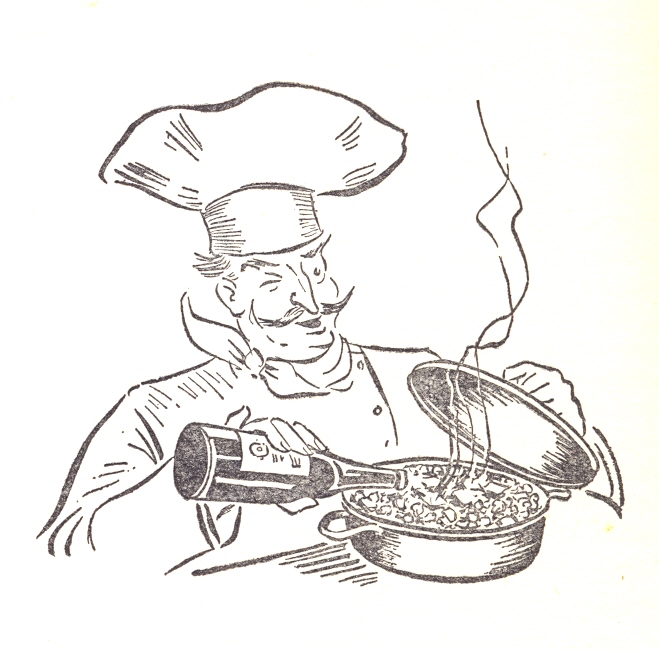 Greetings! If you have been following my recent posts, you know that I have promised to prepare a randomly-chosen recipe from each cookbook I review.
Greetings! If you have been following my recent posts, you know that I have promised to prepare a randomly-chosen recipe from each cookbook I review.
The first of my cookbook reviews was Casserole Magic by Lousene Rousseau Brunner, published in 1953. When I used a random number generator, the winning recipe was Tuna-Fish with Noodles (page 89).
Enjoy the video recap of my cooking experience!

As promised in the video, follow this link for more information about the wine I mention:
This is my favorite winery in Sonoma, CA so please be sure to visit on your next trip there!
Please subscribe to my YouTube channel and be sure to sign up for the mailing list to receive updates about this blog. My next cookbook review will be coming soon!
Epicuriously Yours,
Tommy


